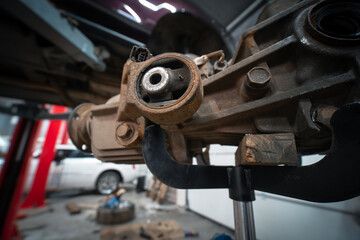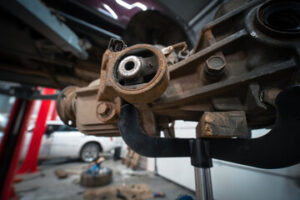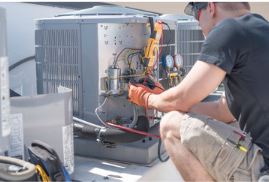Link building is a crucial element in digital marketing. It helps websites gain visibility and authority. The process involves acquiring hyperlinks from other websites. These links signal trust and relevance to search engines.
Quality links have a direct impact on search rankings. Search engines consider backlinks as endorsements. More links from reputable sources improve credibility. Strong links increase the chances of higher rankings. Read on Rank Boss for more details.
Not all links carry equal value. High-quality links from trusted sites hold more weight. Low-quality or spam links can harm rankings. Focus on securing natural and relevant links.
Content plays a key role in link building. Valuable and informative content attracts links naturally. Readers are more likely to share engaging content. Original and well-researched content drives organic links.
Guest blogging is a popular link-building strategy. Writing for other websites creates exposure and backlinks. It allows the inclusion of a link within the content. Well-crafted guest posts enhance authority and reach.
Broken link building is an effective tactic. It involves finding broken links on other websites. Offering replacement content builds goodwill and backlinks. This approach benefits both parties involved.
Internal linking strengthens a website’s structure. It distributes link equity across pages. Linking related content improves user experience. Strategic internal linking boosts page authority.
Anchor text influences link effectiveness. Relevant and descriptive anchor text improves context. Over-optimized anchors can trigger penalties. Balanced and natural anchor text enhances SEO.
Link outreach requires a personalized approach. Mass outreach often leads to low response rates. Tailored messages increase the chances of acceptance. Building genuine relationships improves outreach success.
Competitor analysis reveals valuable link opportunities. Studying competitor backlinks provides insights. Identifying gaps helps refine link-building strategies. Competitor links offer a roadmap for improvement.
Social media platforms support link-building efforts. Content shared on social channels gains exposure. Increased visibility leads to potential backlinks. Social engagement strengthens link-building campaigns.
Influencer partnerships drive high-quality links. Influencers have established credibility and reach. Collaborating with influencers creates natural links. Authentic endorsements enhance link value.
Link velocity affects search engine trust. Rapid link acquisition raises suspicion. Steady and natural growth builds trust. Balanced link velocity maintains ranking stability.
Directories and listings provide foundational links. Niche directories improve relevance and visibility. Accurate business information enhances local search rankings. Well-maintained listings strengthen credibility.
User-generated content encourages organic links. Reviews, testimonials, and forums create natural backlinks. Positive user engagement increases link diversity. Interactive content enhances link-building value.
Video content generates backlink opportunities. Informative and engaging videos attract shares. Embedded links drive traffic and authority. Video content supports multi-channel link building.
Press releases generate media coverage and links. Newsworthy content attracts editorial links. Media mentions increase authority and trust. Well-timed press releases improve visibility.
Link reclamation recovers lost or broken links. Monitoring backlinks reveals dropped connections. Requesting reinstatement restores link value. Consistent monitoring ensures link stability.
Local link building enhances geographic relevance. Community partnerships and events create local links. Business directories strengthen local presence. Local links improve search engine trust.
Niche link building targets specific audiences. Industry-specific content attracts targeted links. Focused outreach improves link relevance. Niche links increase topical authority.
Forum participation builds relationships and links. Providing helpful answers establishes expertise. Including links in signatures drives traffic. Forum links enhance community engagement.
Guest interviews provide link opportunities. Industry leaders attract significant attention. Featuring insights creates valuable backlinks. Expert interviews increase credibility and exposure.
Link exchanges require careful execution. Reciprocal links can benefit both parties. Excessive link exchanges reduce effectiveness. Balanced exchanges maintain link quality.
Case studies create authoritative backlinks. Real-world examples demonstrate expertise. Industry publications link to valuable case studies. Data-driven content attracts high-quality links.
Infographics generate high engagement and links. Visually appealing content encourages sharing. Embedded source links drive traffic. Infographics simplify complex information.
Webinars and live events create link opportunities. Registration pages and event summaries generate backlinks. Post-event content attracts follow-up links. Engaged audiences enhance link-building success.
Sponsorships generate positive brand associations. Sponsored events and content gain visibility. Backlinks from trusted sources improve credibility. Sponsorship links build long-term value.
Product reviews drive targeted backlinks. Honest reviews attract industry attention. Positive mentions increase trust and traffic. Review-based links enhance product visibility.
Content syndication expands reach and backlinks. Republishing content on trusted platforms increases visibility. Canonical tags prevent duplicate content penalties. Syndicated content drives referral traffic.
Testimonials and endorsements create link potential. Positive experiences increase sharing and backlinks. Endorsements from trusted figures enhance credibility. Testimonials improve link diversity.
RSS feeds drive consistent backlink opportunities. Regular content updates keep audiences engaged. Subscriptions generate organic backlinks. RSS feeds improve content discoverability.
Community engagement fosters organic link growth. Answering questions and providing value attracts links. Active participation increases exposure. Community-driven links enhance authority.
Harboring user trust strengthens link retention. Consistent content quality increases link longevity. Reliable sources retain backlinks longer. Trust-building supports sustainable link building.
Technical SEO supports link-building success. Fast-loading pages improve user experience. Secure connections increase search engine trust. Technical health boosts link performance.
Analytics refine link-building strategies. Tracking link performance reveals strengths and gaps. Adjusting outreach improves link acquisition. Data-driven insights enhance long-term success.
Thought leadership attracts industry recognition. Authoritative content garners attention and links. Original perspectives increase shareability. Thought leadership positions strengthen backlink value.
Exclusive content increases backlink value. Insider insights attract niche audiences. Limited access drives engagement. Exclusive content encourages link sharing.
Content hubs centralize internal and external links. Organized hubs improve content discoverability. High-performing hubs attract backlinks. Centralized content enhances site authority.
Natural link patterns prevent penalties. Unnatural spikes raise red flags. Gradual link growth maintains trust. Balanced patterns support long-term rankings.
Affiliate links provide monetization and traffic. Strategic placement drives clicks and conversions. Trusted affiliate networks increase link value. Monetized links enhance revenue potential.
Educational content drives organic links. Informative guides attract industry attention. Step-by-step tutorials generate backlinks. Educational content establishes authority.
Interactive tools create link opportunities. Calculators and widgets increase user engagement. Embedded links drive referral traffic. Interactive content supports multi-channel link building.
Expert roundups generate high engagement. Insights from industry leaders attract backlinks. Shared perspectives increase reach. Roundups position content as a valuable resource.
Crowdsourced content creates diverse backlink opportunities. User contributions increase visibility. Inclusive content encourages sharing. Crowdsourced insights enhance content credibility.
Micro-influencers provide targeted link opportunities. Smaller audiences increase engagement rates. Authentic recommendations generate organic links. Micro-influencer partnerships strengthen niche relevance.
Long-form content attracts high-quality backlinks. In-depth articles demonstrate expertise. Comprehensive resources increase shareability. Long-form content establishes thought leadership.
Link building remains essential for long-term digital success. Strategic planning improves link diversity and quality. Consistent effort enhances search rankings. A balanced approach drives sustainable results.














